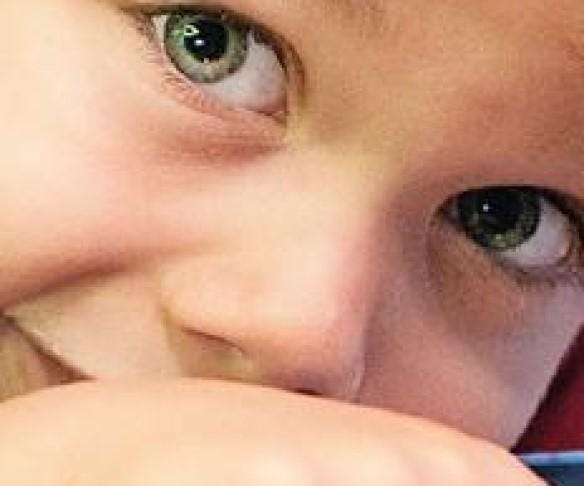Help your Preschooler Make Food Choices
Based on the FITS Research, we found the foods and nutrients you should be helping your preschooler get.
Fruits and vegetables
FITS found that getting enough vegetables is a concern. About one third of Preschoolers are not eating a discrete portion of vegetables on a given day, and among those who do, most are falling short of the recommended amount. Fruits and vegetables offer essential vitamins, minerals and fiber to a Preschooler's balanced diet and are important for healthy growth and development.
How to bridge the gap:
Serve your Preschooler 1 cup of fruit and 1 cup of vegetables every day. Fruit and vegetable servings can be from fresh, frozen or canned foods, chopped to the right size and texture. Remember, you can still serve purees to your Preschooler—and use their favorite foods to add variety.
For example:
Stir ¼ cup Gerber® fruit purees into plain yogurt (or add milk for a smoothie).
Whole Grains
About 40% of preschoolers aren't eating whole grains. Many have whole grain cereal—but are missing out on whole grain versions of bread, pasta and brown rice.
How to bridge the gap:
Look for "whole grain" on food labels and consider whole grain crackers and snacks made with whole grains at snack time.
Desserts and Sweetened Beverages
There’s not a lot of room in your Preschooler's diet for foods that offer calories but not many nutrients. The study found that 90% of Preschoolers consume a dessert, sweet and/or sweetened beverage on a given day. Desserts, sweets and sweetened beverages can be high in calories compared to the micronutrients they provide and can displace other nutritious foods.
How to bridge the gap:
In place of sweets, serve your Preschooler food choices that are more nutritious options such as: fruits, yogurt, cereals and fortified snacks that are made with whole grains. If choosing a fruit-based drink, make sure the label says 100% juice and limit the amount they drink each day.
Vitamins, Minerals and Fats Lacking in Preschooler Diets
Fiber
Fiber plays an important role in your Preschooler's balanced diet and digestive health. But ...on a given day, the latest FITS research found that only 1 in 10 Preschoolers are meeting the adequate intake of 19 grams of fiber a day.
How to bridge the gap:
Offer whole grains, and fresh, frozen or canned fruits and vegetables each day. Try creating smoothies by blending whole fruits (with skins and peels) with yogurt.
Vitamin E
A balanced Preschooler diet includes Vitamin E, an important antioxidant that helps protect the cells in the body from damage. According to the study, a third of 2-4 year olds are not getting the recommended amount of Vitamin E in their diet.
How to bridge the gap:
Foods that have Vitamin E include vegetable oils (canola, corn, soybean), avocados, whole grains, and some leafy green vegetables (spinach, broccoli). Also fortified products like Gerber® Lil' Crunchies® —Apple Sweet Potato help maintain adequate intakes of Vitamin E.
Potassium
Potassium is a mineral that helps muscles work properly. FITS continues to find that virtually no Preschoolers are meeting the recommended intake of Potassium in their diet.
How to bridge the gap:
You can help your preschooler get more potassium in their diet by including potatoes, sweet potatoes, tomatoes, beans, yogurt, milk, bananas and citrus fruits each day.
Vitamin D
Vitamin D is necessary for healthy bones and teeth. About 80% of 2-3 year olds fall short of the recommended amount of vitamin D in their diets.
How to bridge the gap:
Foods such as fortified dairy products, fatty fish such as salmon and scrambled eggs offer this important nutrient. And, a little bit of sunshine but talk to your doctor about finding a balance between brief exposures and sunscreen.
Healthy fats
Healthy fats aid in growth and brain development. Fat also helps the body use vitamins, such as Vitamins A, D, E, and K. FITS showed that about 40% of Preschoolers ages 2 to 4 years are consuming less than the recommended amount of total fat in their diet, yet nearly 70% are consuming too much saturated fat. A Preschooler's balanced diet should include about 30 to 40% of total calories from fat, and mostly mono- and polyunsaturated fats like those found in fish, avocados and foods made with vegetable oils, such as canola and soybean oil. These healthy fats are better for them than the fat found in Preschooler food choices like hot dogs, bacon and sausages.
How to bridge the gap:
Try preparing foods with canola oil, which also contains the healthy omega-3 fat, or offer condiments such as mayonnaise or salad dressings made with these oils. Remember to limit foods high in saturated and trans fats.






